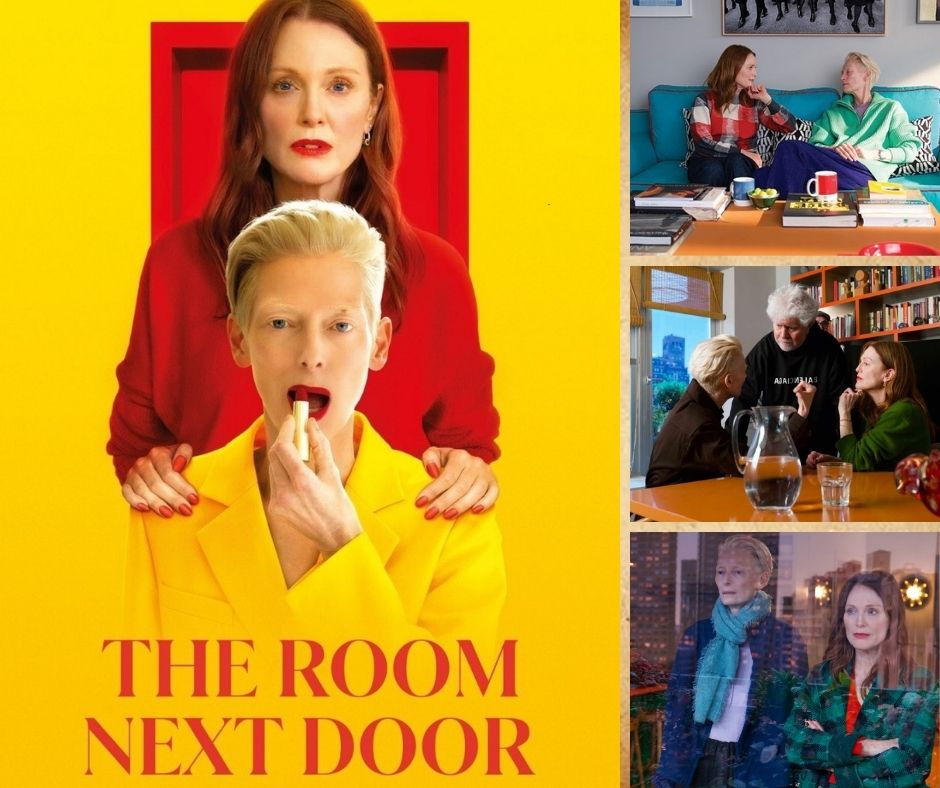The Room Next Door (Spain, 2024)

In The Room Next Door, Pedro Almodóvar steps into English-language filmmaking with a film that is unmistakably his own, marked by his masterful touch in crafting vivid visuals and profound emotional depth. The story centers on Ingrid (Julianne Moore), a bestselling author who, despite her fear of death, has written a book about it. She reconnects with Martha (Tilda Swinton), a former war correspondent now battling a severe illness. Their renewed friendship becomes a journey through shared memories, personal revelations, and profound discussions about life and mortality.
From the moment the film starts, it’s clear that Almodóvar’s directorial prowess transcends language barriers. The film’s visual splendor and rhythmic dialogue are a testament to his skill, making every frame a work of art. The environments are inviting, and the scenes are crafted with such detail that viewers feel intimately connected to the characters’ world. The snow falling against a purple cityscape and the meticulously designed house where the two women stay are particularly striking, showcasing Almodóvar’s eye for memorable imagery.
Despite its setting in confined locations, The Room Next Door maintains a brisk pace, with engaging dialogue that keeps the narrative flowing effortlessly. The film’s technical aspects—such as the score, costume design, and cinematography—are all up to Almodóvar’s high standards, demonstrating that he has not compromised on quality despite working in a new language.
Every scene in the film feels purposeful, and even seemingly minor moments, such as John Turturro’s appearances, contribute significantly to the development of Moore’s character. Julianne Moore delivers a compelling performance, capturing the internal conflict of her character with depth and nuance. However, it is Tilda Swinton’s role that stands out as particularly captivating. Swinton’s portrayal of Martha is essential to the film’s impact, and her ability to infuse melodrama with authenticity adds a unique layer to the story. Her performance, including her smart choice to play up melodramatic moments as if her character is acting herself, highlights her intelligence and dedication to her craft.
The film’s use of color is not just aesthetically pleasing but also narratively significant. Swinton’s wardrobe shifts from purple to green to reflect themes of death and life, while Moore’s costumes evolve from blue to red, symbolizing her character’s acceptance of reality. The score by Almodóvar usual collaborator, Alberto Iglesias, anchors The Room Next Door within the Almodóvar cinematic universe, wavering through the film’s narrative with a familiarity that complements Almodóvar’s visual and emotional style.
Although some melodramatic elements, such as a scene where Tilda forgets her pills or an unintentional rehearsal, may occasionally feel excessive, Almodóvar’s experience in the genre ensures these moments do not overstay their welcome. Ultimately, The Room Next Door is a highly inviting film that captivates with its rich visual and emotional tapestry, making it a noteworthy entry in Almodóvar’s illustrious career.
